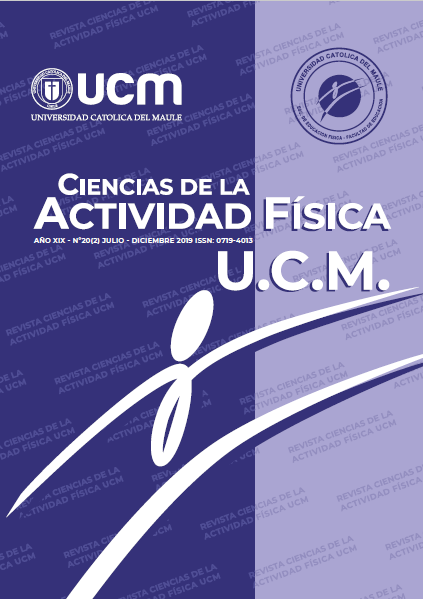ACSM. (2017). Guidelines For Exercise Testing and Prescription. 10th ed. Philadelphia: Lippincott Williams & Wilkins.
Blagrove, R. (2013). Programmes of concurrent strength and endurance training: how to minimise the interference effect. Part 1: Evidence and mechanisms of interference. Professional Strength and Conditioning, 31, 7-14. Recuperado de https://www.researchgate.net/publication/319464447_Programmes_of_concurrent_strength_and_endurance_
training_how_to_minimise_the_interference_effect_Part_1_Evidence_and_mechanisms_of_interference
Brook, M., Wilkinson, D., Phillips, B., Perez-Schindler, J., Philp, A., Smith, K., & Atherton, P. (2016). Skeletal muscle homeostasis and plasticity in youth and ageing: impact of nutrition and exercise. Acta Physiologica, 216(1), 15-41. doi:10.1111/apha.12532
de Sena Martins, A., Duarte, D. N. D. B. B., de Paula Silva, G., de Oliveira Leal, S. M., Alías, A., Rodrigues, L. C., & Rosa, G. (2017). Força muscular em mulheres praticantes de treinamento de força e de treinamento concorrente: um estudo descritivo comparativo. Revista de Educação Física/Journal of Physical Education, 86(2), 88-94. Recuperado de http://189.38.70.15/index.php/revista/article/view/221
De Souza, E., Tricoli, V., Roschel, H., Brum, P. C., Bacurau, A., Ferreira, J. C. B. et al. (2013). Molecular adaptations to concurrent training. International Journal of Sports Medicine, 34(03), 207-213. DOI:10.1055/s-0032-1312627
Della Corte, J., Rangel, L., de Souza Vale, R. G., de Mello, D. B., Marcos-Pardo, P. J., Rosa, G. (2019). ¿Afecta el entrenamiento intervalado de alta intensidad (HIIT) al desempeño en el entrenamiento de la fuerza? Archivos de Medicina del Deporte N° 189, 32(1), 8-12. Recuperado de http://archivosdemedicinadeldeporte.com/articulos/upload/FEMEDE_189.pdf
Farías, M.C., Borba-Pinheiro, C., Oliveira, M., & Vale, R.G.S. (2014). Efectos de un programa de entrenamiento concurrente sobre la fuerza muscular, flexibilidad y autonomía funcional de mujeres mayores. Ciencias De La Actividad Física UCM, 15(2), 13-24. Recuperado de http://revistacaf.ucm.cl/article/view/50
Garber, C,E., Blissmer, B., Deschenes, M.R., Franklin, B.A., Lamonte ,M.J., Lee, I.M., Nieman, D.C., Swain, D.P., American College of Sports Medicine. (2011). American College of Sports Medicine position stand. Quantity and quality of exercise for developing and maintaining cardiorespiratory, musculoskeletal, and neuromotor fitness in apparently healthy adults: guidance for prescribing exercise. Medicine & Science Sports & Exercise, 43(7), 1334-59. doi:10.1249/MSS.0b013e318213fefb
Hoppeler, H. (2016). Molecular networks in skeletal muscle plasticity. Journal of Experimental Biology, 219(2), 205-213. doi:10.1242/jeb.128207
Jesus, M. A., Mello, D. B., Alias, A., Ribeiro, J., Nunes, K., & Rosa, G. (2016). Efeito agudo do exercício cardiorrespiratório sobre o desempenho da força em membros inferiores. Revista de Educação Física, 85(4). Recuperado de http://189.38.70.15/index.php/revista/article/view/197/pdf_64
Küüsmaa-Schildt, M., Eklund, D., Avela, J., Rytkönen, T., Newton, R., Izquierdo, M., & Häkkinen, K. (2017). Neuromuscular adaptations to combined strength and endurance training: order and time-of-day. International Journal of Sports Medicine, 38(09), 707-716. DOI:10.1055/s-0043-101376
Monteiro-Lago, T., Cardoso, MD., Henriques, I., Mello, D.B., Fortes, M.S.R., Vale, R.G.S., & Rosa, G. (2019). Impact of eight weeks of concurrent training on obesity-related biochemical parameters and cardiometabolic risk factors: a case report. Advances in Obesity, Weight Management & Control, 9(4), 98‒103. DOI:10.15406/aowmc.2019.09.00281
Mounier, R., Théret, M., Lantier, L., Foretz, M., & Viollet, B. (2015). Expanding roles for AMPK in skeletal muscle plasticity. Trends in Endocrinology & Metabolism, 26(6), 275-286. doi:10.1016/j.tem.2015.02.009
Paulo, A. (2005). Efeito do treinamento concorrente no desenvolvimento da força motora e da resistência aeróbia. Revista Mackenzie de Educação Física e Esporte, 4(4), 145-154. Recuperado de http://www.bbheart.com.br/Trein_Conc.pdf
Powers, S., & Howley, E. (2014). Fisiologia do Exercício: teoria e aplicação ao condicionamento e ao desempenho. 8 ed. Barueri: Manole.
Rosa, G., Dantas, E., Biehl, C., e Silva, H. D. C., Montano, M. A. E., & De Mello, D. B. (2012). Leptin, cortisol and distinct concurrent training sequences. International journal of sports medicine, 33(03), 177-180. DOI:10.1055/s- 0031-1298002
Rosa, G., Fortes, M. S. R., Mello, D. B. (2016). Concurrent training decreases cortisol but not zinc concentrations: effects of distinct exercise protocols. Scientifica. Recuperado de https://doi.org/10.1155/2016/7643016
Rosa-Guillamón, A. (2018). Análisis de la relación entre salud, ejercicio físico y condición física em escolares y adolescentes. Revista Ciencias de la Actividad Física UCM, 20(1), 1-15. Recuperado de https://doi.org/10.29035/ rcaf.20.1.1
Wilson, J., Marin, P., Rhea, M., Wilson, S., Loenneke, J., & Anderson, J. (2012). Concurrent training: A meta-analysis examining interference of aerobic and resistance exercise. J Strength Cond Res, 26(8), 2293-2307. doi:10.1519/ JSC.0b013e31823a3e2d


 https://orcid.org/0000-0002-7979-0337
https://orcid.org/0000-0002-7979-0337
